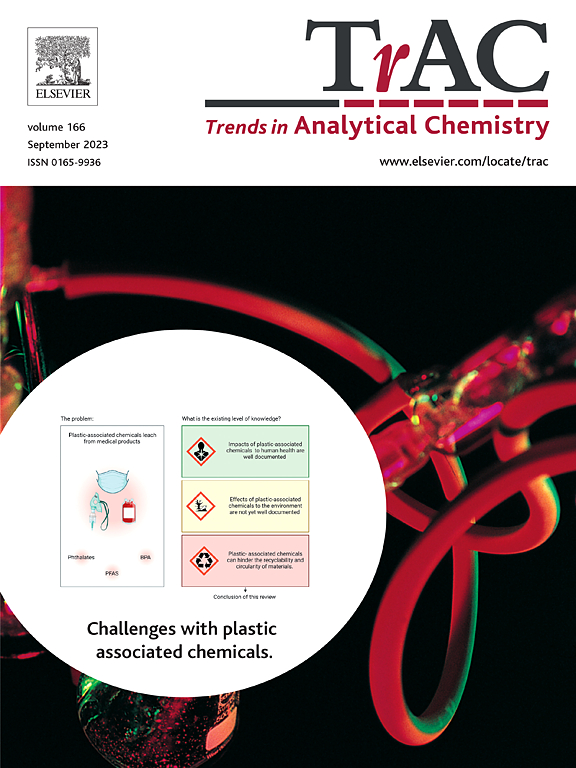Chelating agent-assisted extraction of toxic elements towards ensuring food and beverage safety: Advances and challenges
IF 11.8
1区 化学
Q1 CHEMISTRY, ANALYTICAL
引用次数: 0
Abstract
Heavy metals (HMs) pose significant health risks when consumed, necessitating accurate detection and removal strategies. This review surveyed the recent advancements in detecting and extracting HMs from food and beverage matrices, focusing on preconcentration methods and the effectiveness of various chelating agents. Next, several preconcentration methods were discussed, including dispersive liquid-liquid microextraction (DLLME) and solid phase extraction (SPE), highlighting their efficiency in isolating metal ions from complex food matrices. Then, the application of various chelating agents, such as dithiocarbamates, phenanthrolines, hydroxyquinolines, and pyridylazo, in the extraction of HMs were discussed based on their selectivity and binding capabilities. By evaluating the mechanisms of action, efficacy, and limitations of various chelating agents, this review surveyed to identify the most effective agents and highlighted areas for extraction of HMs. The review emphasizes recent advances and challenges (advantages, limitations, and research gaps) in the chelating agent-assisted extraction of HMs to ensure food and beverage safety. Finally, future perspectives on applying chelating compounds to remove hazardous metals were evaluated.

求助全文
约1分钟内获得全文
求助全文
来源期刊

Trends in Analytical Chemistry
化学-分析化学
CiteScore
20.00
自引率
4.60%
发文量
257
审稿时长
3.4 months
期刊介绍:
TrAC publishes succinct and critical overviews of recent advancements in analytical chemistry, designed to assist analytical chemists and other users of analytical techniques. These reviews offer excellent, up-to-date, and timely coverage of various topics within analytical chemistry. Encompassing areas such as analytical instrumentation, biomedical analysis, biomolecular analysis, biosensors, chemical analysis, chemometrics, clinical chemistry, drug discovery, environmental analysis and monitoring, food analysis, forensic science, laboratory automation, materials science, metabolomics, pesticide-residue analysis, pharmaceutical analysis, proteomics, surface science, and water analysis and monitoring, these critical reviews provide comprehensive insights for practitioners in the field.
 求助内容:
求助内容: 应助结果提醒方式:
应助结果提醒方式:


